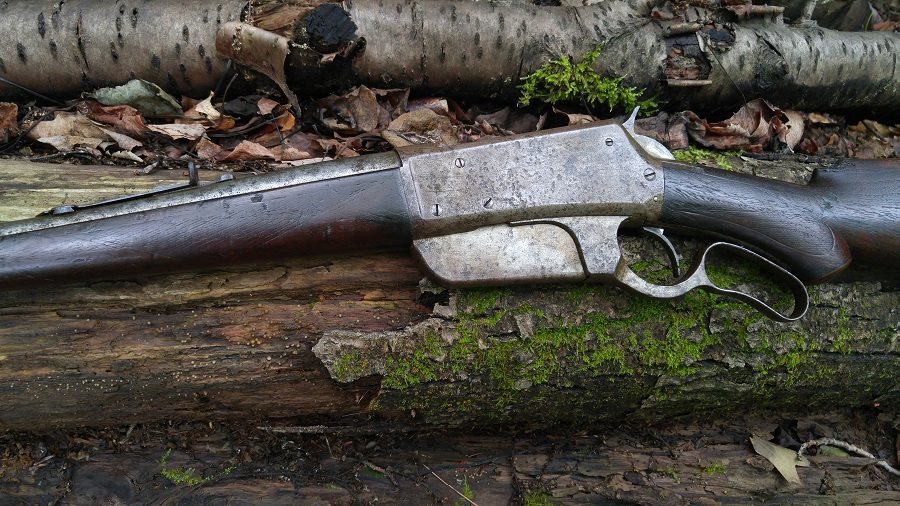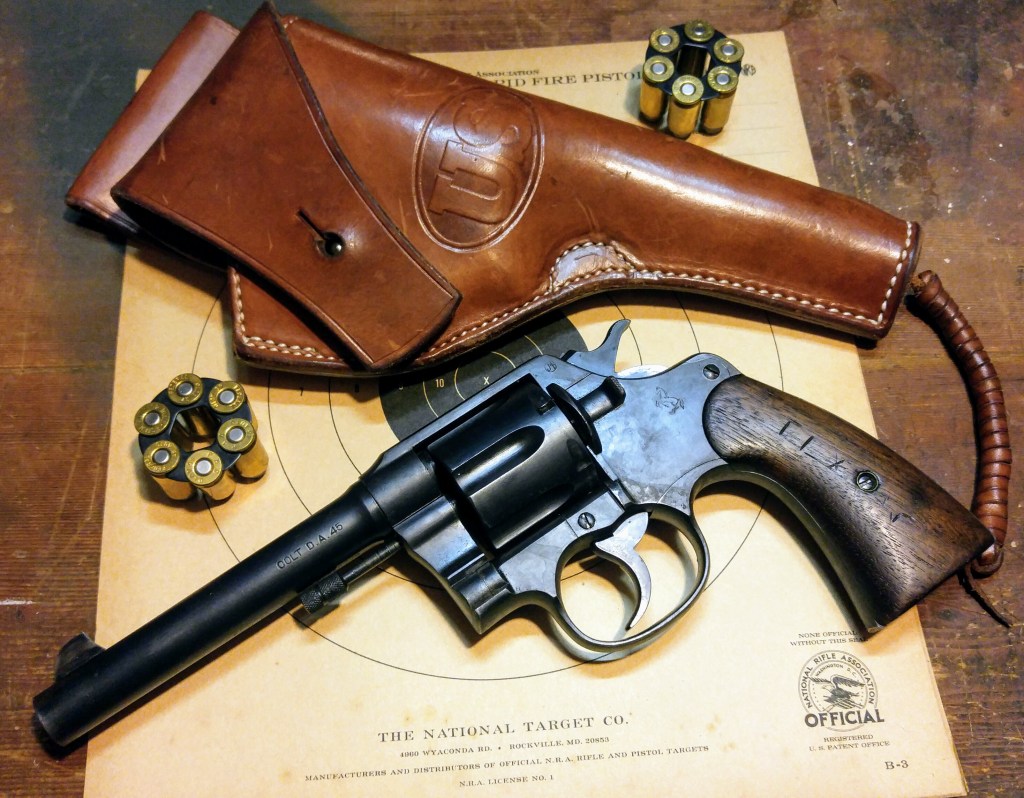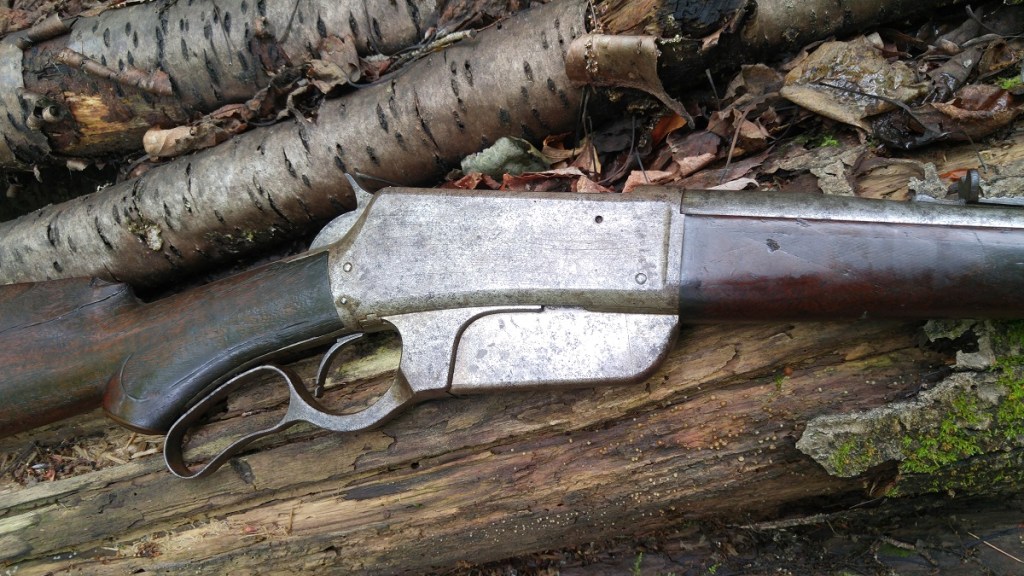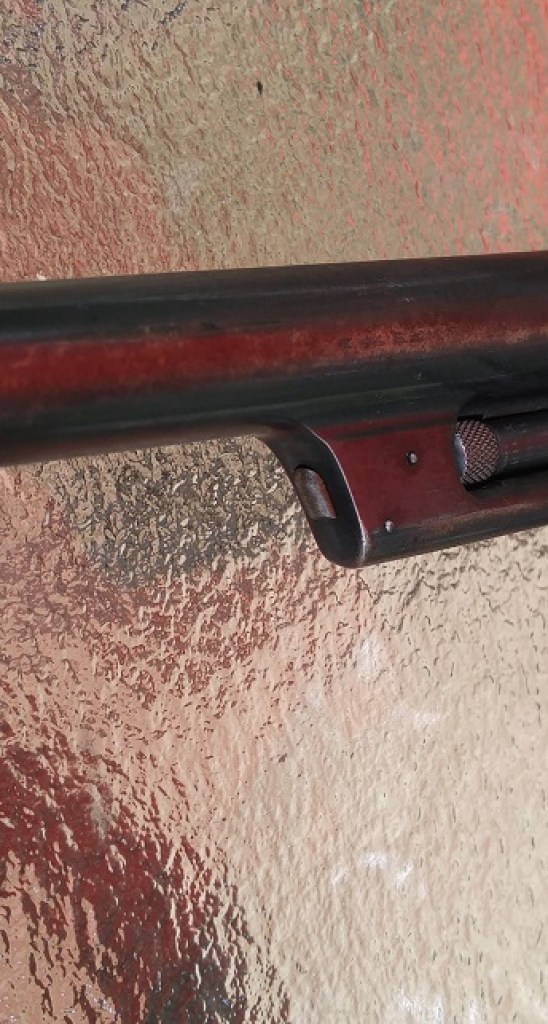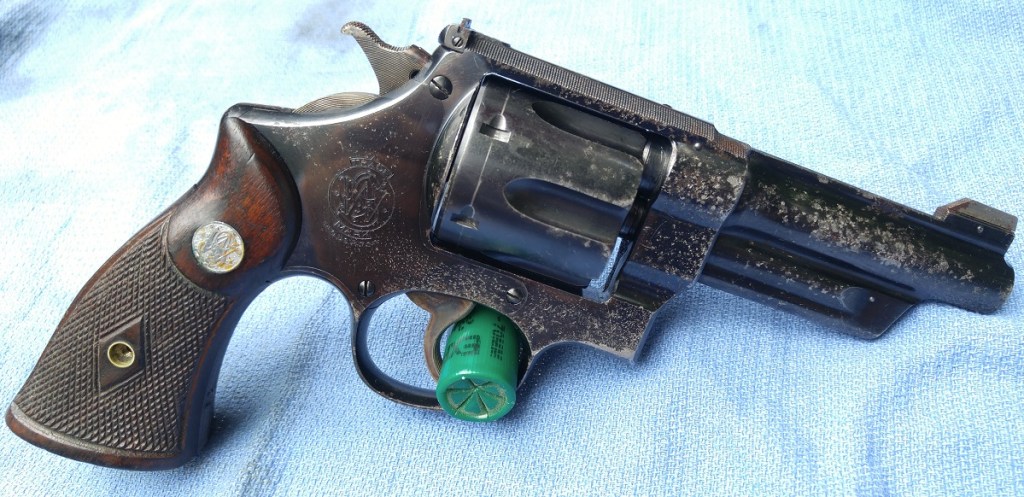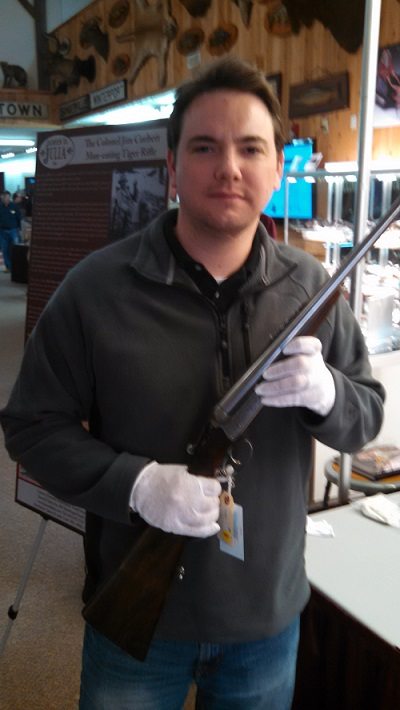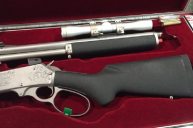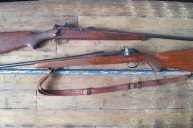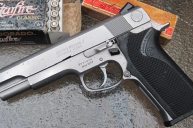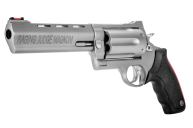Boy, if these guns could talk...
I'm blessed to have a family and circle of friends who are avid gun collectors. If you spend enough time in collector circles, you get to see some amazing firearms and, if you're lucky, hear some unreal stories about the guns and the men who used them.
Here are a few that do have some dynamite tales: some documented, some not so much (but good yarns to smile at anyway). Do you believe these stories?
Colt M1917 .45 ACP Revolver
The Colt M1917 was introduced during World War One in 1917 along with its Smith & Wesson M1917 brethren. Colt's 1911 .45 ACP was in huge demand in the brutal trench warfare. Colt, Remington-UMC, and other contractors could not crank 1911s out fast enough to meet the needs of a growing conflict. Therefore, the US military adopted the Model of 1917 revolver in the same .45 ACP caliber the 1911 employed. Both the S&W and Colt variants used "half moon" clips to ensure the extraction of the rimless .45 ACP cartridges, and both types were used heavily in the first and second world wars.
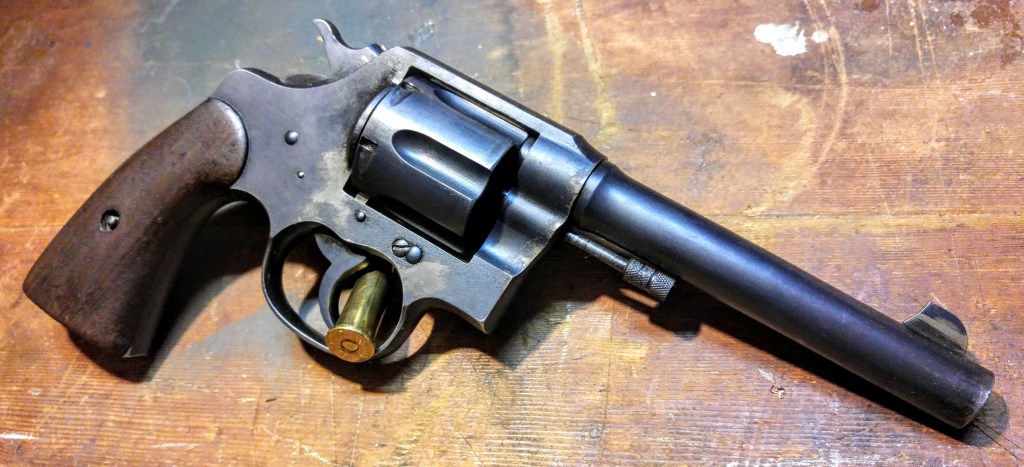
This particular Colt M1917 was manufactured in 1918, and is all original but missing the butt-mounted lanyard loop. This big Colt may be the longest-serving 1917 of them all! The pistol has accompanying documentation proving that this particular Colt revolver was carried as a personal sidearm by a U.S. Marines Staff Sergeant recon team leader in the "B" Company, 1st Force Reconnaissance Batallion in 1991, during Operation Desert Storm. I have met the (now retired) Staff Sergeant who carried the Colt, and since he is a fellow firearms enthusiast, I have no doubts to the claim. I never did ask him if he had to use the pistol in the line of duty.
Winchester 1895 "Flatside" Deluxe Rifle
The last lever-action rifle designed by the illustrious John Moses Browning, the 1895 Winchester, was the first levergun designed to use rimless cartridges from a box magazine. As such, the 1895 Winchester could harness the ballistic advantages of pointed bullets and high velocities from new smokeless high-pressure calibers. The .30-03, .30-06, .30 US (.30-40 Krag), .303 British, 7.62x54 Russian (really!), .405 Winchester, .35 Winchester, and other high-performance calibers filled the magazine of the '95, giving it a decided advantage over the blase calibers usually found in leverguns. The first 5000 or so '95 Winchester had flat, featureless receiver sides; thereafter the receivers were scalloped for weight savings and aesthetics.

Our 1895 Winchester rifle shown here is a very early first year production "flatside" model with a 3-digit serial number. Chambered in .30-40 Krag, it is - as you can see - in terrible shape. While the rifle is still functional, the 28 inches of bore is dark and corroded, and the exterior metal is worn with lots of pits and zero finish. Believe it or not, when this rifle was produced in 1895, left the factory as a beautiful special-order deluxe rifle.
It sports a pistol grip stock and vestiges of checkering still show on the weathered walnut. This neglected, mind-bogglingly rare rifle was found as a set gun in an abandoned Maine trapper's camp. Grooves have been filed in the trigger for a tripwire to activate the trigger - the rifle was left, loaded and cocked, as a security feature to the cabin in the chance an unwelcome visitor tripped in. Nobody is sure what happened to the owner, or how long the rifle had been left, performing stalwart sentry duty for untold years to a forgotten cabin in Northeastern Maine.
Smith & Wesson .44 New Century "Triple Lock"
The Smith & Wesson .44 New Century "Triple Lock" was S&W's first new revolver design of the 20th century - hence the "New Century" moniker. The Triple Lock was beefed up to handle the then-new .44 Special cartridge, and sported a third locking point at the front of the cylinder crane. This feature gave the handgun its now-legendary-but-unofficial name. A tad over 15,000 Triple Locks were made between 1908 and 1917 - many of them going to the British and Canadians for wartime use in WW1. The Triple Lock is widely considered to be the finest revolver ever made.

This particular Triple Lock stayed in North America, but fired shots in anger nonetheless. The story goes that this 1909-manufactured Triple Lock in .44 Special found its way into a Mexican smuggler's hands not long after it was made. In 1919, the smuggler ambushed a sheriff's deputy southeast of El Paso, Texas near a creek on the famed Sierra Blanca trail. The bandit unloaded the cylinder of big .44 slugs at the lawman, but the deputy promptly killed the smuggler with return fire.
The deputy wrested this Triple Lock out of the smuggler's hands and used it as his personal sidearm through the 1920s. Who knows what nefarious deeds this beautiful pistol participated in, used on both sides of the law in a lawless time?
Smith & Wesson .357 FBI Registered Magnum
When the .357 Magnum cartridge was rolled out in 1934, Smith & Wesson introduced a new revolver to accompany the new hot caliber. The Registered Magnum was a hand-built special-order masterpiece, with a huge list of options including barrel lengths (from 3/12" to 8 3/4", in 1/4" increments), sights, hammers, trigger, grips, and finishes. Each new Registered Magnum came from Smith & Wesson with a letter of authenticity and a registration number stamped on the frame, under the cylinder crane. Registered Magnums are true works of art, with finely checkered topstraps, concentric grooved hammers, and exquisite bluing. Less than 6,000 Registered Magnums were made before S&W discontinued the extremely expensive custom options and standardized the line. This revolver design would later become the Model 27 in the 1950s.
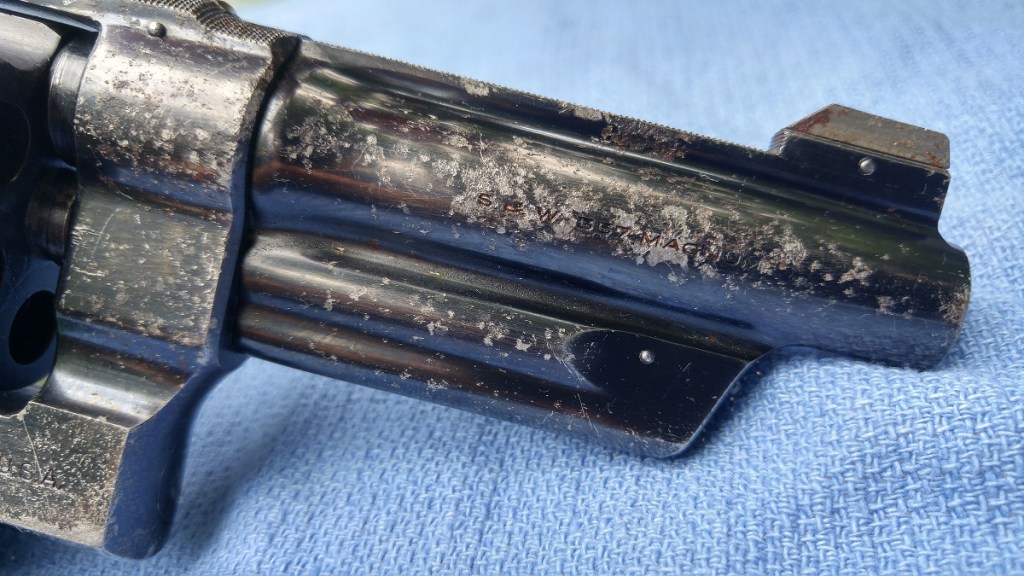
Our particular subject has been lettered by Smith & Wesson's historian Roy Jinks, and was shown to be a 4" barreled variant with walnut stocks and a blued finish. Registered number 4937 was one of 12 shipped to the "U.S. Treasure Department" in July, 1939, and then on to the FBI. The real story behind this beautifully made gun is what we don't know. The metal work is in good shape, but there is severe pitting on the once-lovely bluing. This corrosion was almost certainly caused by blood spatter, which will erode bluing and steel in short order if not addressed. What (or who) was this gun shooting at at such close range that it caused blood to be sprayed on the finish?
Or maybe it was used as a "tool of persuasion" by an aggressive FBI agent? We'll never know, but we can certainly let our minds boggle as we theorize...
Colonel James Corbett's W.J. Jeffrey .450/400 Tiger Rifle
Saving the best for last! This is a (terrible) photo of your humble author gingerly grasping what is considered to be "the most important and iconic double rifle ever offered for sale", according to James D. Julia, the auction house that sold the rifle. Auctioned in February 2015 for $264,500.00 as part of the legendary Elmer Kieth collection, the Corbett double rifle has a captivating history indeed.
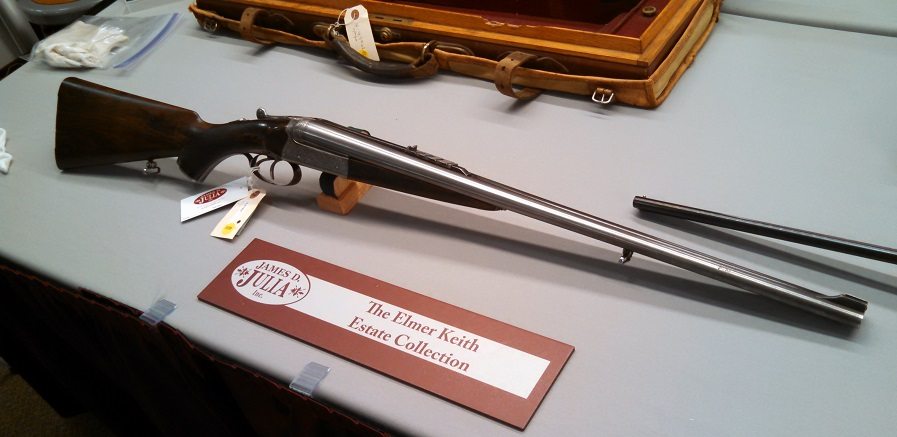
Jim Corbett was a famed hunter and author who killed a large number of man-eating tigers and leopards for the Indian government in the early 1900s. Corbett used this particular worn but well cared for W.J. Jeffrey boxlock double to douse the lights on approximately 33 man-eating great cats. The Jeffrey was manufactured in 1909 and became Corbett's main tiger hunting rifle.
It is estimated that the tigers and leopards Corbett killed were collectively responsible for over 1,200 human deaths. When I was blessed to be able to handle the rifle and swing it to my shoulder, I couldn't help but imagine peering over the express leaf sights at a glowering kitty, intent on returning the favor of being hunted. Scary, titillating, heart-racing thoughts indeed!
Firearms with stories, documented or not, are treasures. Take the time to listen, take the tales to heart, handle the guns whenever possible, and pass the fables along. It's a part of our heritage, not just the gun's - and these stories deserve never to die.
All photos by author.
NEXT: BUILDING AN AR-15: A BEGINNER'S GUIDE WITH TIPS FROM THE PROS
